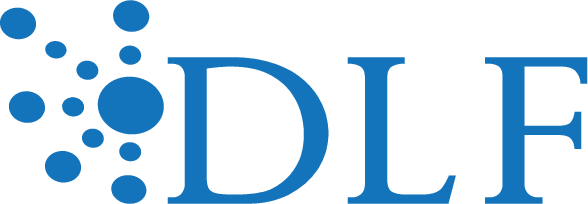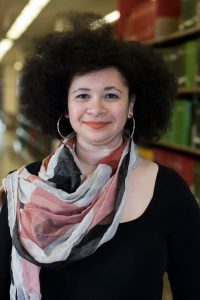This reflection was written by Dorothy Berry, who attended the American Institute for Conservation (AIC) annual meeting in Chicago with support from a Kress+DLF GLAM Cross-Pollinator Fellowship. The award, which aims to encourage sharing perspectives among GLAM communities, is possible in part thanks to a partnership with AIC.
After the first day of the AIC conference and a long evening of gallery viewing and reception schmoozing at the Art Institute of Chicago, I found myself around a late night dinner table with a group of old and new friends. “I’m just an archivist, I don’t know about this conservator stuff,” I said in a light self-deprecating turn. “I mean, regardless of our job titles, we’re all pretty much archivists!,” was the friendly response.
Though I remain incredulous at lumping time-based media collections managers, media conservators, and performance art catalogers together under the header “archivist”, the sentiment was reflective of my overall experience at AIC. The increasing material diversity of archival holdings mirrors that of museum collections, creating an ever-growing sense of solidarity in the realm of conserving and preserving cultural heritage materials for future generations.
Art conservation is a particular broad field, with distinct specializations and techniques. A photo conservator has honed a very different set of skills from a textile conservator. In response to this reality, I found AIC a uniquely organized conference. Specialization groups- Architecture, Book & Paper, Electronic Media, Wooden Artifacts, etc., had marathon session blocks in single rooms. This makes perfect sense for such a focused field, but was a little difficult for someone like me who intended to sample a variety of sessions.
In response to this unexpected organizational schema, I spent most of the conference in sessions from the Electronic Media group. The sessions that appealed most to me tackled the myriad ways institutions are handling their exponentially multiplying stores of digital content. “Digital Preservation Actions as Interventive Conservation Treatments at the Smithsonian,” led by Crystal Sanchez and Briana Feston-Brunet, and “The Role of Conservation Treatment in a Mass-Digitisation Program,” led by Felicity Corkill both dealt with the integration of conservation and digitization initiatives. Though the two projects discussed, one across Smithsonian Institute collections and the other at the State Library of New South Wales, are at institutions with larger sources of funding than most, they raised important points about digitization and collections case that are thought-provoking for anyone working with digital collections.
The idea of actively integrating conservation, whether through attached documentation in DAMS or by making low-level conservation practices part of overall digitization workflows, into digitization projects was one that I found very relevant to the work of digital libraries and archives. A lot of digitization work happens under the ethos, if not the practice, of More Product, Less Process, but adding a bit to the process at the front end could improve the content we put online while improving the longevity of our content in the stacks.
Attending AIC reminded me of the commonalities between GLAM fields, while opening my eyes to disciplinary differences that drastically affect decisions between conserving and preserving. This conference was a fantastic opportunity to look outside of the archives and see what similar work is being done across the world.

